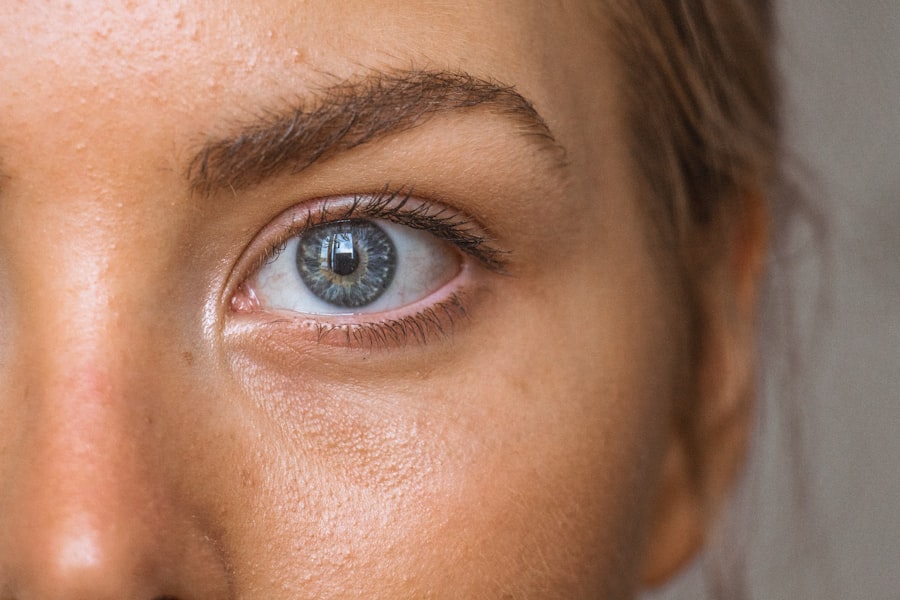Laser hair removal is a popular cosmetic procedure that utilizes concentrated beams of light to target and eliminate unwanted hair. The technology works by emitting a specific wavelength of light that is absorbed by the pigment in the hair follicles. This absorption generates heat, which damages the follicles and inhibits future hair growth.
As you consider this method, it’s essential to understand that it is most effective on individuals with light skin and dark hair, as the contrast allows the laser to target the hair more effectively. The procedure is typically performed in a series of sessions, as hair grows in cycles, and not all hair is in the same growth phase at any given time. Each session can last anywhere from a few minutes to an hour, depending on the size of the area being treated.
While many people experience a significant reduction in hair growth after completing their treatment plan, it’s important to note that results can vary based on individual factors such as hair type, skin tone, and hormonal influences. Understanding these basics can help you make informed decisions about whether laser hair removal is right for you.
Key Takeaways
- Laser hair removal uses concentrated light to target and destroy hair follicles, resulting in long-term hair reduction.
- DIY laser hair removal can lead to potential risks and side effects such as skin damage, burns, ineffective results, and eye damage.
- Skin damage and burns can occur if the laser is not used properly or if the skin is not adequately protected during the treatment.
- Ineffective results and wasted time and money can result from DIY laser hair removal if the treatment is not performed correctly or if the wrong type of laser is used.
- Eye damage and vision problems can occur if the eyes are not properly protected during DIY laser hair removal, leading to serious long-term consequences.
Potential Risks and Side Effects of DIY Laser Hair Removal
With the rise of at-home beauty devices, many individuals are tempted to try DIY laser hair removal as a cost-effective alternative to professional treatments. However, this approach carries significant risks that can lead to adverse outcomes. One of the primary concerns is that home devices often lack the power and precision of professional-grade lasers.
This can result in ineffective treatments, leading you to believe that you are achieving results when, in fact, you may be doing more harm than good. Moreover, without proper training and understanding of skin types and hair characteristics, you may inadvertently use the device incorrectly. This misuse can lead to uneven results or even exacerbate existing skin conditions.
Skin Damage and Burns

One of the most significant risks associated with DIY laser hair removal is the potential for skin damage and burns. Home devices may not have the same safety features as those used in professional settings, increasing the likelihood of mishaps. If you misjudge the intensity settings or fail to follow instructions carefully, you could easily cause burns or other injuries to your skin.
These burns can range from mild redness and irritation to severe blistering, which may require medical attention. Additionally, improper use of laser devices can lead to long-term skin issues such as hyperpigmentation or scarring. If you have sensitive skin or a history of skin conditions, the risks are even greater.
It’s essential to consider whether the potential for skin damage is worth the convenience of attempting laser hair removal at home. Consulting with a professional can help you understand your skin type better and determine the safest approach for hair removal.
Ineffective Results and Wasted Time and Money
| Reasons for Ineffective Results | Impact of Wasted Time and Money |
|---|---|
| Lack of clear goals and objectives | Decreased productivity and efficiency |
| Poor communication and collaboration | Increased costs and resource allocation |
| Insufficient planning and strategy | Missed opportunities and revenue loss |
| Inadequate skills and expertise | Unnecessary expenses and budget overruns |
When you opt for DIY laser hair removal, you may find yourself facing ineffective results that lead to frustration and disappointment. Many home devices promise quick fixes but often fail to deliver the desired outcomes. You might invest time and money into a series of treatments only to realize that your hair continues to grow back at its usual rate.
This not only wastes your resources but can also lead to a sense of defeat regarding your beauty regimen. In contrast, professional laser hair removal treatments are tailored to your specific needs and are conducted by trained technicians who understand how to achieve optimal results. They can adjust settings based on your unique skin and hair characteristics, ensuring that you receive the most effective treatment possible.
By choosing a professional service, you are more likely to see significant reductions in hair growth, making it a more worthwhile investment in the long run.
Eye Damage and Vision Problems
Another critical risk associated with DIY laser hair removal is the potential for eye damage and vision problems. Many home laser devices emit powerful beams of light that can be harmful if they come into contact with your eyes. Even if you are careful, accidents can happen, leading to serious consequences such as temporary or permanent vision impairment.
This risk is particularly concerning if you are using a device on areas close to your face or neck. In professional settings, protective eyewear is always provided to safeguard against such risks. Trained technicians are also well-versed in safety protocols that minimize exposure to harmful light.
If you are considering laser hair removal, it’s vital to prioritize your eye safety by opting for professional treatment rather than attempting it at home without proper precautions.
Infection and Scarring

In addition to burns and skin damage, DIY laser hair removal can increase your risk of infection and scarring. When using a laser device at home, there is a higher chance of improper technique leading to open wounds or irritation on your skin. If these areas are not cared for properly, they can become breeding grounds for bacteria, resulting in infections that may require medical intervention.
Scarring is another potential outcome of poorly executed laser treatments. If you experience burns or irritation during your DIY sessions, the healing process may leave behind unsightly scars that can be difficult to treat later on. Professional practitioners are trained to minimize these risks through proper technique and aftercare advice, ensuring that your skin remains healthy throughout the process.
Importance of Professional Consultation and Treatment
Given the numerous risks associated with DIY laser hair removal, seeking professional consultation and treatment is paramount. A qualified practitioner will assess your skin type, hair color, and overall health before recommending a personalized treatment plan tailored specifically for you. This initial consultation allows for an open dialogue about your goals and any concerns you may have regarding the procedure.
Moreover, professionals have access to advanced technology and techniques that enhance safety and effectiveness. They can monitor your progress throughout the treatment process and make necessary adjustments based on how your skin responds. By choosing professional services, you not only ensure better results but also gain peace of mind knowing that your safety is prioritized.
Alternatives to DIY Laser Hair Removal
If you’re hesitant about professional laser hair removal but still want effective alternatives, there are several options available that may suit your needs better than DIY methods. Traditional methods such as waxing or shaving remain popular choices for many individuals seeking temporary hair removal solutions. While these methods require regular maintenance, they are generally safer than attempting laser treatments at home.
Additionally, there are other advanced hair removal technologies available in salons and clinics that may be less invasive than traditional laser treatments. For instance, intense pulsed light (IPL) therapy offers similar benefits but uses a broader spectrum of light wavelengths, making it suitable for various skin types. Exploring these alternatives with a professional can help you find a method that aligns with your preferences while minimizing risks associated with DIY approaches.
In conclusion, while DIY laser hair removal may seem like an attractive option due to its convenience and cost-effectiveness, it carries significant risks that can lead to adverse outcomes such as skin damage, ineffective results, eye injuries, infections, and scarring. Prioritizing your safety by seeking professional consultation and treatment ensures that you receive personalized care tailored to your unique needs. Additionally, exploring alternative methods can provide effective solutions without compromising your well-being.
Ultimately, investing in professional services not only enhances your chances of achieving desired results but also protects your health in the long run.
If you are considering trying laser hair removal at home, it is important to be aware of the potential side effects that may occur. According to a recent article on inlaserhairremoval.com, some common side effects of at-home laser hair removal include redness, swelling, and irritation of the skin. It is crucial to follow the instructions carefully and perform a patch test before using the device on a larger area to minimize the risk of adverse reactions.
FAQs
What are the common side effects of laser hair removal at home?
Some common side effects of laser hair removal at home may include redness, swelling, and skin irritation at the treatment site. In some cases, blistering, scarring, or changes in skin pigmentation may occur.
Are there any potential risks associated with laser hair removal at home?
Yes, there are potential risks associated with laser hair removal at home, including burns, skin damage, and the potential for ineffective hair removal if not done properly.
How can I minimize the risk of side effects when doing laser hair removal at home?
To minimize the risk of side effects when doing laser hair removal at home, it is important to carefully follow the instructions provided with the device, perform a patch test on a small area of skin, and avoid treating areas with open wounds, infections, or tattoos.
Can certain skin types or conditions increase the risk of side effects from laser hair removal at home?
Yes, individuals with darker skin tones or certain skin conditions such as eczema or psoriasis may have an increased risk of experiencing side effects from laser hair removal at home. It is important to consult with a healthcare professional before using a laser hair removal device at home.
When should I seek medical attention for side effects from laser hair removal at home?
If you experience severe or prolonged side effects such as severe pain, blistering, or signs of infection after using a laser hair removal device at home, it is important to seek medical attention promptly.




